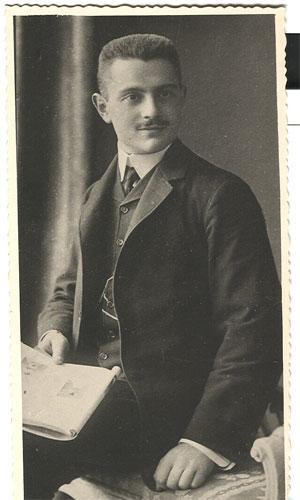The good times in Berlin
Isaak took this opportunity to move his family once again, this time to the cultured capital city of the one-time German Empire. He was forty-eight in 1914 and most likely didn’t serve in the Great War. Most Jewish men of age from Isaak’s class and background proudly did their service. Some paid the ultimate price, including several Wohlgemuths from West Prussia who are found on German casualty lists.
The Treaty of Versailles in 1919 altered the map. Prussian territories including West Prussia were ceded to Poland, and Danzig was made an autonomous “free city.” For the Wohlgemuths in postwar, early Weimar Berlin, life was beset by inflation and political unrest, but Isaak and Betty nevertheless found Berlin to be a more congenial locale for their style of cosmopolitan Jewishness. They lived in the suburb of Weißensee. As their two daughters came of age, there was no shortage of eligible suitors.
A match was made for Elly with a handsome Jewish war veteran, Hermann Ringel, who was fifteen years her senior. Hermann was already successful in business as a wholesaler of ready-made outerwear for men and boys. He also ran a separate import-export clothing business together with a partner.
Hermann and Elly lived at first in Weißensee and later moved to the fashionable Charlottenburg neighborhood. They enjoyed a comfortable lifestyle even though their marriage was not an entirely happy one. Their only child, whom they named Helga Fanny Ringel, was born at Empress Auguste Victoria Hospital in Charlottenburg on October 20, 1924. Elly’s sister Hilde, who was six years younger, later married another eligible Jewish businessman, Herbert Peiser, and little Helga was a flower girl at the wedding.

